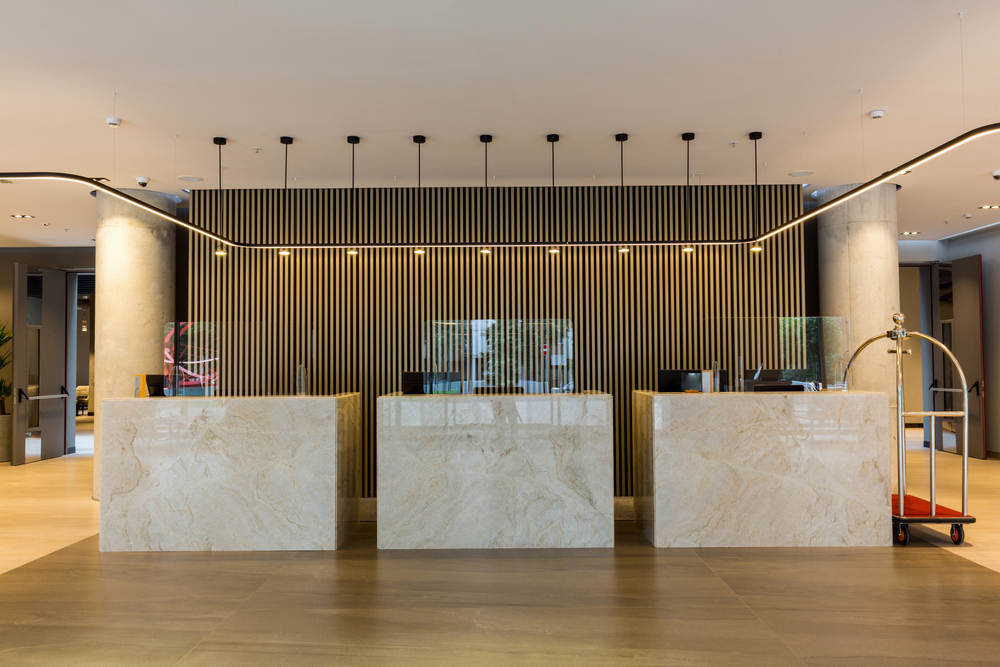How to Schedule Test and Tag With Minimal Disruption to Your Hotel Guests
July 22, 2025
Keeping your hotel compliant with electrical safety standards is essential, but it shouldn’t come at the cost of guest satisfaction. With rising guest expectations, test and tag services must be scheduled carefully to avoid disruption. With experts at ETCS, this guide will show you how to manage test and tag in line with AS/NZS 3760:2022 and Victoria’s OH&S regulations.
From smart scheduling during low-occupancy windows to choosing technicians who understand the hospitality rhythm, we’ll walk you through strategies to stay compliant without compromising comfort. Let's get started!

Before you can schedule test and tag services with minimal disruption, you must know exactly what needs testing and how often. In hotels, where electrical equipment is used around the clock by guests and staff, safety checks aren’t just good practice; they're a legal requirement. Different parts of your hotel carry different levels of risk and frequency of use, meaning your testing schedule should be tailored to each zone. Here’s a breakdown:
Identifying key equipment early helps create a smoother, disruption-free testing plan. Let’s take a closer look at which appliances need attention and where to find them.
To protect guests, staff, and your business, hotels must follow strict electrical testing guidelines. Knowing which standards apply ensures your test and tag process is compliant and up to date.
The frequency of testing depends on how and where the item is used. Some general rules for hotels include the following:
In a busy Melbourne hotel, timing is everything, especially when it comes to test and tag. Poorly scheduled testing can disrupt guests, interfere with housekeeping, or create unnecessary stress for staff. The key to a smooth process lies in aligning testing with your daily operations. By choosing the right time windows, you can keep your hotel running efficiently. Here are some strategies you should consider:
Analyse your booking patterns to identify times when the hotel is less busy. This might include weekdays or slower seasons. By aligning testing with these periods, you can minimise the number of guests affected by the process. Additionally, reduced occupancy means less demand for hotel amenities and services, allowing for more flexibility and access to different areas without causing serious inconvenience.
Another strategic time window for conducting test and tag operations is the period between guest check-out and check-in times. Typically, this window spans a few hours and represents a lull in guest activity, making it an ideal time to perform necessary checks. This approach requires precise timing and communication but can be highly effective in maintaining a seamless guest experience.
You might also consider aligning check visits with scheduled room maintenance or housekeeping rounds. This lets you combine tasks and avoid repeated room entries. This strategy also saves staff time and ensures rooms are guest-ready as soon as testing and maintenance are done. Coordination with housekeeping and maintenance is key to a smooth process.
Adopt a floor-by-floor rotation strategy for test and tag operations. This method improves workflow efficiency and gives staff a clearer schedule, all while keeping the majority of the hotel open for business. Also, informing guests in advance about which floors will undergo testing can further enhance their experience, as they can plan for any minor inconveniences.

Not all test and tag providers understand the unique rhythm of hotel operations. That’s why working with a team experienced in the hospitality industry makes all the difference. A provider who knows how to navigate guest check-ins, quiet hours, and high-traffic zones can help you create a testing plan that’s efficient, discreet, and guest-friendly. With the right partner, staying compliant becomes easier and far less disruptive. Here’s how to effectively plan your test and tag services with a hospitality-focused provider:
This ensures that they are aware of the specific challenges and requirements in such settings. These professionals understand the importance of guest comfort and privacy, and they are adept at navigating the complex environment of a hotel, from guest rooms to shared facilities. Their experience allows them to perform their duties efficiently and discreetly, reducing guest disturbance.
Flexibility in scheduling is key to maintaining guest satisfaction. Discuss with your provider the possibility of conducting testing during off-peak hours. Options such as early morning, late evening, or weekend services can reduce the impact on your guests. Customising the schedule to your hotel’s routine keeps disruptions to a minimum.
The provider should use quiet, low-profile equipment and follow discreet protocols. This consideration is important in a hotel setting, where noise and visibility can impact guest experiences. Providers should use equipment designed to operate silently and efficiently, so testing can be done without drawing attention.
In conclusion, test and tag doesn’t have to disrupt your hotel’s flow. With the right planning, smart timing, and a hospitality-focused provider by your side, you can maintain full compliance while keeping operations seamless and guest comfort intact. Don’t wait for an inspection to reveal a safety gap. Act now by partnering with a specialist who understands hotel operations and works around your schedule. Your guests deserve a safe stay, and your team deserves a process that works quietly in the background.